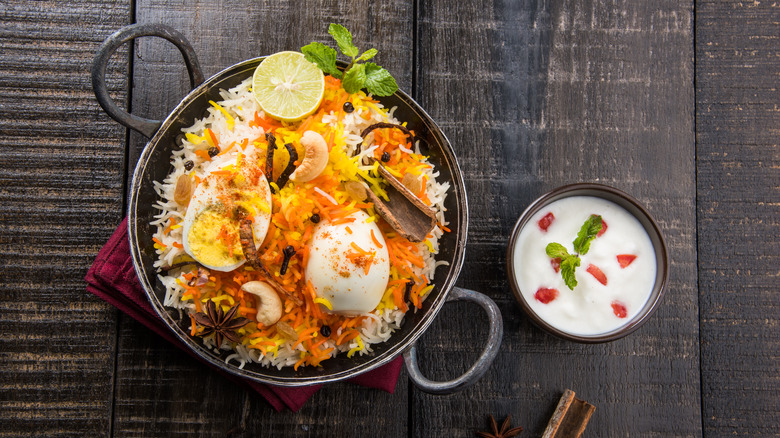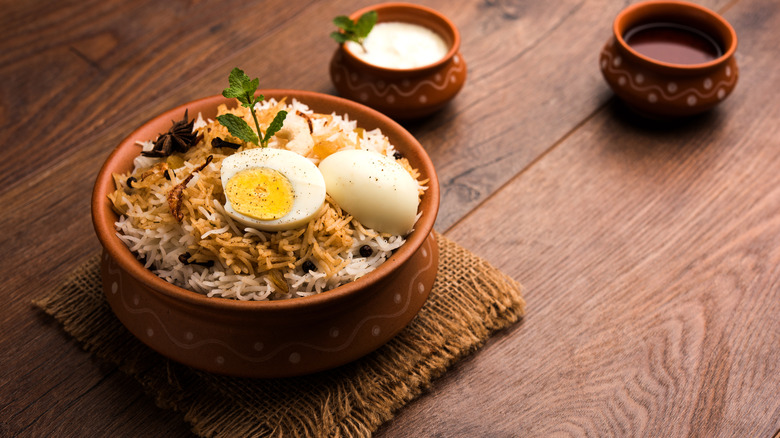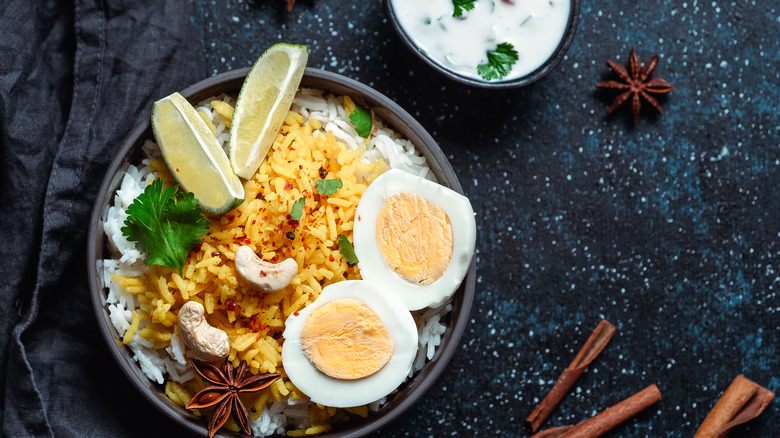What Is Egg Biryani And What Does It Taste Like?
The Indian subcontinent is a vast land with numerous cultures and myriad cooking styles. However, one particular dish that is popular throughout its length and breadth is biryani. This one-pot rice dish has many variations depending on which part of South Asia it is made in. So, while North Indian Kutch chicken biryani is made with long-grained basmati rice and a particular set of spices, the South Indian Hyderabadi biryani is made with different spices and short-grained rice.
Vegetable biryani is best for those who enjoy the flavor of authentic biryani without meat, as is anda biryani, also known as egg biryani. The layers of rice and spices cooked for many hours on a low flame are perfectly complemented by the richness of the boiled eggs for a smoky, rich, spicy, and truly delicious taste.
Are you curious to know more about the egg variation of one of South Asia's most popular dishes? We explore in depth what egg biryani is and how it tastes, so you can try it for yourself the next time you're craving biryani.
The origins of egg biryani
Though typically regarded as a quintessentially South Asian dish with its epicenter in India, biryani is said to have first originated in Persia. The word biryani comes from the word "birian" which in the Persian language signifies being fried before being cooked. One origin story has it that the first iterations of biryani in India were meals made in a buried pot to feed warriors as far back as 1398, using rice, whatever meat was nearby, and regional spices. There are, of course, competing stories on how exactly biryani was first brought to the area.
Egg biryani in particular uses eggs as the main protein instead of meat from a lamb or chicken. It is the ideal dish for biryani lovers who either avoid eating meat or love the taste of eggs. The rich flavors of boiled eggs make this a hearty choice for a vegetarian dish.
Different types of egg biryani
Any kind of biryani can differ from region to region, and so too can egg biryani. The Hyderabadi egg biryani requires spices like saffron, red chili powder, and biryani masala. North Indian biryanis instead rely on the smoky and nutty flavor of ghee and spices such as cinnamon, cardamom, cilantro, mint leaves, turmeric, coriander, and garam masala. The Kerala version, also called the mutta biryani, uses spices like star anise, mace, and fennel powder.
One thing to keep in mind while making egg biryani is that the eggs should be hard-boiled separately then peeled, and tossed spices of your choice. (Try a simple mixture of turmeric, chili powder, and salt, to start.) They should then be fried in ghee before they are added to the biryani. The egg biryani should be served with an Indian yogurt condiment like this spicy raita to complement the flavors. If you're pressed for time, you can even make egg biryani in a pressure cooker.


